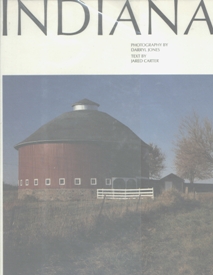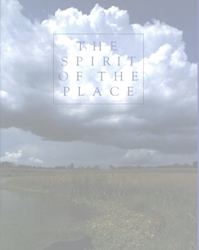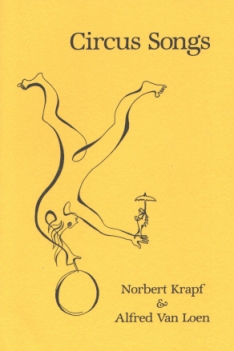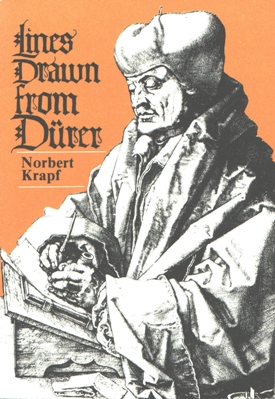

I first became aware of the photographs of Darryl Jones in 1984. On sabbatical from Long Island University, I was in Indiana to give readings of my poetry. When I read at my alma mater, St. Joseph's College, Rensselaer, some four hours north of my hometown, Jasper, my former professor of music history and appreciation, John Egan, gave me a copy of Indiana. The photography is by Darryl Jones, and the text is by
Jared Carter, whose poems I knew and loved.
The photographs of Darryl Jones, however, came to me as a revelation. His images revealed a sense of place and evoked a deeper reality, as I was trying to do in the poems I was writing about the landscape of the region where I was born and grew up and both sides of my family had lived since the 1840s. In these photographs, I found a meditative calm, spiritual connectedness, and sense of reverence and awe in response to nature and all of life.


Some ten years later, another book of Darryl Jones photographs, with words by a favorite historical novelist, James Alexander Thom, The Spirit of the Place: Indiana Hill Country, came into my consciousness and deepened my appreciation of Darryl's photographs and the beauty of the hill country that I have always considered my spiritual home. What the photographer said in the preface about the change and development in his way of seeing and photographing a landscape resonated for me as a poet: "My response to scenes is still pure and direct, but there is a greater depth now because of an understanding of the metaphysical transparency." I appreciated his praise of the great transcendentalists Emerson and Thoreau, two of my favorite writers, for seeing a spiritual reality in and beyond the physical. The photographer was drawn to Taoist and Buddhist landscape paintings much in the way that I was drawn to Lucien Stryk's translations in his wondrous The Penguin Book of Zen Poetry.
My earliest Indiana poems, many of them written in the 1970s, appeared in 1993, in Somewhere in Southern Indiana, but by the time the book came out, my approach to writing about landscape had changed. I was more and more concerned with penetrating the surface of things, to connect with a spiritual reality within and beyond. What Darryl Jones said about his journey as a photographer spoke for the journey I was making as a poet: "My earlier journeys were important to me, but the desire to learn from external travel has been replaced by a desire to learn from the journey within."
In "the Language of Place," a poem that gives the title to the first section of The Country I Come From, poems set in Indiana, I say that the language we derive, intuitively, from the place that is sacred to us cannot be translated for others,
Unless you feel the ancient
rhythm and ritual of prayer
suddenly rise up from
the ground and pass
through and beyond you.
When the publisher of this new collection of Indiana poems asked if I could recommend a photograph to use on the cover, I asked him to consider some Darryl Jones' photographs in The Spirit of the Place. I recommended several, and we settled on "Cornfield at Sunset," a landscape of rolling autumnal hills, a golden field of corn, farm buildings in the background, and rolling green fields in the foreground. When I contacted Darryl Jones for the first time, to seek his permission, he responded with enthusiasm.
After I moved with my family to Indianapolis in 2004, Darryl and I had the opportunity to meet on occasion, and we vowed that one day we must work together. As my family and I adjusted to our new life in Indiana and Darryl and I approached the end of previous projects, we agreed that the time had come for us to collaborate. When I was reading final proof for a collection of new poems set in Indiana and Germany, Looking for God's Country, which includes a cycle of twenty-six poems, "Franconian Faces and Fields," inspired by the black-and-white photographs of Andreas Riedel, a young photographer from my ancestral region in northern Bavaria, Darryl contacted me and announced that he would like to drop off a CD of photographs he wanted me to see.
I had collaborated with my late colleague Alfred Van Loen on Circus Songs, a collection of his drawings and my poems in response; written narrative poems about the work of northern European art (by Pieter Brueghel the Elder, Albrecht Dürer, Lukas Cranach, and the sculptor Tilman Riemenschneider) collected in "The Landscape of the Masters," the middle section of Blue-Eyed Grass: Poems of Germany; and always liked the idea of artists in different fields and genres working together. To collaborate with an Indiana photographer whose work I admired, not long after I returned to live in Indiana, would be a fitting way to celebrate and complete my homecoming.


From Darryl Jones, I was expecting to receive the kind of realistic landscapes I had come to treasure in The Spirit of the Place. I was preparing myself to write autobiographical narratives that would perhaps recreate and explore childhood landscapes and experiences; but the dreamlike, mythic, and timeless Polaroid manipulations and transfers of Indiana scenes I discovered on the CD provided a much richer stimulation to my imagination. I did not need to know - in fact, did not discover until we were about three-fourths of the way through our collaboration - that Darryl had titled his collection of Polaroid images Invisible Presence. We were on the same path, taking a parallel journey, and his evocative and haunting images served as triggers for my poems, as gateways into the spirit of the place we both love.
Before the photographer gave me these Polaroid images, he had distilled his subjects to their spiritual essence. This enabled me to begin the process of writing poems about the Indiana scenes and subjects with an unprecedented and propulsive head start. Writing the poems in response to Darryl Jones' images in Invisible Presence was like discovering a second visual self that had been preparing my verbal self to find the voice to articulate the meditative vision ripening within me.
© Norbert Krapf 2006